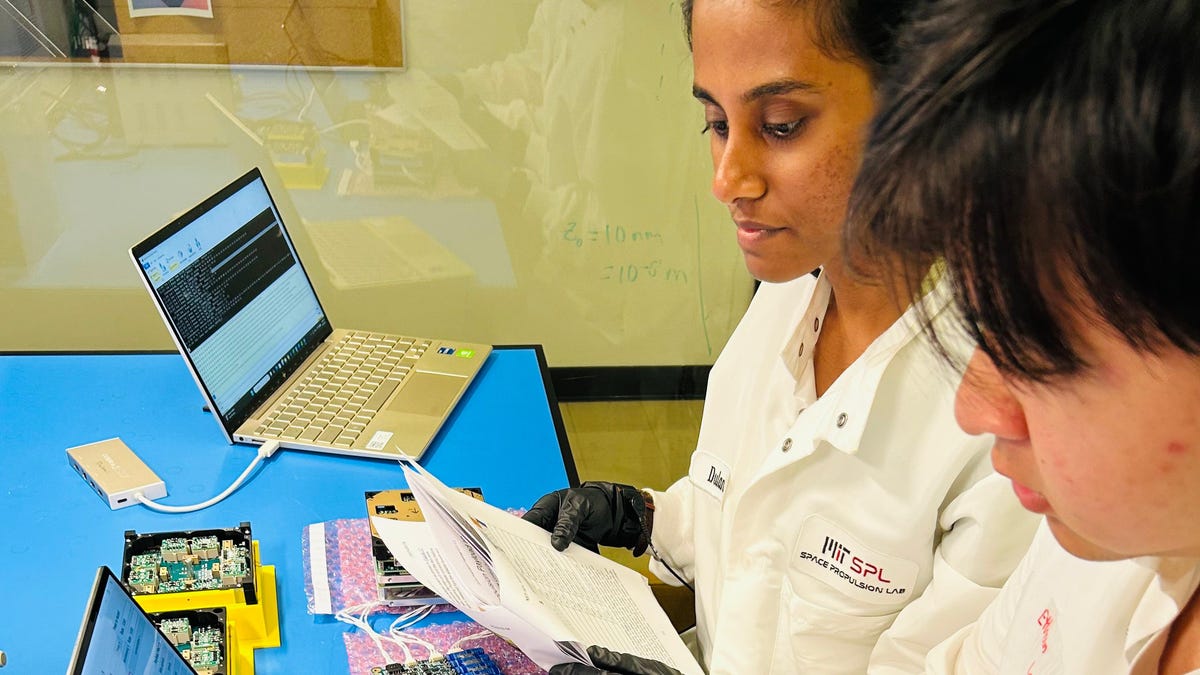Robin Roenker
| Studio Gannett
NASA’s University SmallSat Technology Partnership (USTP) initiative offers opportunities for university researchers to help shape the future of space exploration in big ways.As a feature of NASA’s larger Small Spacecraft Technology program, the USTP provides funding to university-based projects that are helping reframe what’s possible for the next generation of SmallSats (small satellites) and CubeSats (cube satellites, some as small as 10 cubic centimeters).Since 2013, NASA had awarded more than $30 million in funding to USTP projects across 36 universities in 22 states. The program’s overall goal is to foster ground-breaking SmallSat innovations toward a trajectory of future use on NASA missions.“Small spacecraft have proven to be a disruptive innovation for exploration, discovery and commercial activity in space,” says Christopher Baker, program executive for the Small Spacecraft Technology program within NASA’s Space Technology Mission Directorate. “Within the past decade, they have grown from what was largely an academic tool into a vibrant industry that sees thousands of spacecraft launched each year.”
Research and Innovation
At Stanford’s Space Rendezvous Laboratory (SLAB), founding director and associate professor of aeronautics and astronautics Simone D’Amico has received USTP support for his work on distributed space systems — networks of multiple, connected small satellites that work together to achieve a single objective in commercial, technological or scientific arenas.D’Amico’s earlier work using onboard star tracker cameras to support satellite swarm navigation has been successfully deployed on NASA’s Starling Mission. It involves satellites within a swarm that are able to make navigation decisions based on information shared with other swarm members rather than relying on a central ground control. Through other NASA-supported projects, D’Amico’s research team has developed sophisticated algorithms able to determine the relative position and velocity of connected satellites with unprecedented precision.“We can estimate the relative position of the satellites within a centimeter of accuracy in real time,” he says. The new navigational approach has been validated in the lab, and it’s been selected as the primary navigational algorithm for two upcoming SmallSat missions: one, expected to launch next year, will image the solar corona, while another, set for roughly 2030, will test precision flying technologies that might one day enable small satellites to explore targets beyond our solar system.At MIT, aeronautics and astronautics professor Paulo Lozano, director of the school’s Space Propulsion Laboratory, has received USTP funding to explore integration of tiny electronic thrusters — a propulsion system using electrical power to propel spacecraft — on to satellites. Because these thrusters are smaller and more efficient, less propellant would be necessary to generate the needed thrust, which would be ideal for powering deep-space small satellite explorations.If all goes well, the possibilities for adoption are wide. “We have many ideas (for application),” Lozano says. “One is to send tens or even hundreds of these small satellites to the asteroid belt to help study and characterize the asteroids’ surface structures.”
Advancing — and Reframing — Mission Objectives
By working with academic-based partners to expand SmallSat capabilities, NASA has been able to “achieve some of our mission objectives at significantly lower risk and cost than using traditional spacecraft,” Baker says.While developing promising new SmallSat technologies is a key goal of USTP, so too is building a critical give-and-take between NASA and university researchers.“If we want (our research) to be of use to NASA, we need to understand their problems,” says University of Texas at Austin associate engineering professor Brandon Jones, director of the school’s Controls, Autonomy, Estimation and Learning for Uncertain Systems (CAELUS) Lab. “One of the best ways to have that understanding is to have (NASA) involved, at an early stage, in our technology development.”Jones’s teams have leveraged USTP funds in developing navigational tracking systems that draw data from onboard cameras to autonomously identify a CubeSat’s location. An upcoming launch into near-Earth orbit will test the use of such visual cues — including islands and archipelagos — as navigational beacons.“We are in collaboration with NASA Johnson Space Center, showing that (this technology) has the potential to be used on Artemis … and (other) missions happening now,” Jones says.From NASA’s agency perspective, working with university partners on SmallSat technology allows for both the rapid development of novel approaches and a means to support a critical pipeline of current and future researchers.SmallSat technology “has grown from a niche area of research to a fundamental part of the space industry,” says Danielle McCulloch, program executive for NASA’s Flight Opportunities program, based at NASA’s Armstrong Flight Research Center. Much of this success, she adds, stems from NASA’s focus on leveraging university researchers’ “early stage, innovative thinking and harnessing it into partnerships.”
